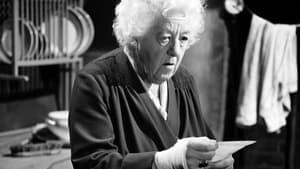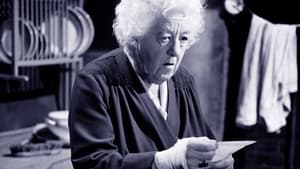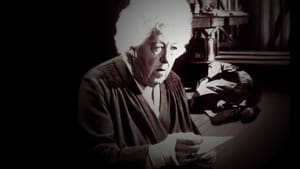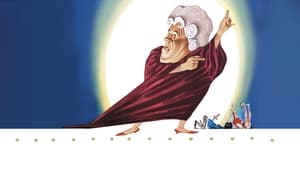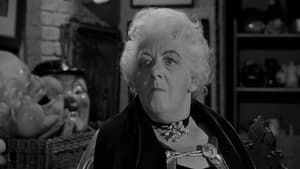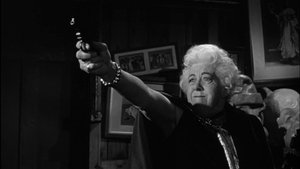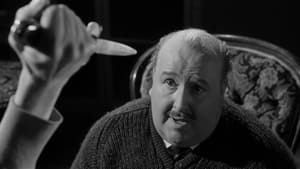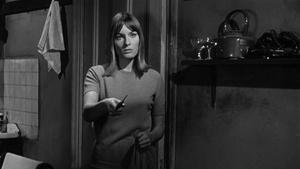Contact: info@alwanfilm.com
Video Sources 0 Views

Synopsis
Review: Murder Most Foul 1964 Colorized – A Classic Whodunit with a Twist of Comedy

Introduction
In the vast and varied landscape of classic British cinema, few films embody the charm and intrigue of the murder mystery genre quite like “Murder Most Foul” (1964). Directed by George Pollock and starring the inimitable Margaret Rutherford as Agatha Christie’s beloved sleuth Miss Marple, this film blends suspense, humor, and drama into a delightful cinematic experience. “Murder Most Foul” is the third installment in a series of films based on Christie’s novels, and it captures the spirit of its source material while also standing as a distinct and memorable piece of entertainment. In this article, we will delve into the elements that make “Murder Most Foul” a classic, from its standout performances to its clever plot, and explore the film’s enduring legacy in the world of mystery cinema.
Check The Full Colorized Movies List
Check Our Colorized Movies Trailer Channel
Understanding Murder Most Foul 1964 Colorized: Director, Cast, and Genre
“Murder Most Foul” is the third of four films in which Margaret Rutherford stars as Miss Marple, an iconic character created by Agatha Christie. Directed by George Pollock, who helmed all four films in this series, “Murder Most Foul” showcases Pollock’s flair for blending suspense with light-hearted comedy. Pollock’s direction is marked by his ability to maintain a balance between the tension of a murder mystery and the whimsical nature of the characters, particularly Miss Marple.
Margaret Rutherford’s portrayal of Miss Marple is a departure from Christie’s literary creation, bringing a more eccentric and comedic touch to the role. Rutherford’s Miss Marple is a feisty, determined amateur detective whose unassuming demeanor belies her sharp wit and keen investigative skills. The cast also includes familiar faces from British cinema, such as Ron Moody, who plays the theatrical and somewhat bumbling Inspector Craddock, and Stringer Davis, Rutherford’s real-life husband, who plays the loyal Mr. Stringer.
The film falls squarely within the genre of the classic British whodunit, a genre that has captivated audiences for decades with its intricate plots, memorable characters, and atmospheric settings. However, “Murder Most Foul” distinguishes itself by infusing the traditional murder mystery with a healthy dose of humor, making it both a suspenseful and entertaining watch.
Exploring the World of Murder Most Foul 1964 Colorized: Plot and Characters
“Murder Most Foul” opens with the trial of a man accused of murdering his landlady. As the jury deliberates, Miss Marple, serving as a juror, becomes convinced of the man’s innocence. Despite the overwhelming evidence, she holds out, leading to a hung jury. Determined to find the real culprit, Miss Marple takes it upon herself to investigate the case further.
Her investigation leads her to a local theater company, where she suspects the true murderer may be hiding among the cast and crew. Under the guise of auditioning for a part, Miss Marple infiltrates the troupe and quickly finds herself embroiled in a web of secrets, rivalries, and, of course, murder. The plot twists and turns as Miss Marple uncovers clues and confronts suspects, all while maintaining her unflappable demeanor and sharp sense of humor.
The characters in “Murder Most Foul” are a colorful and eccentric bunch, typical of the ensemble casts often found in British murder mysteries. From the pompous lead actor to the nervous stage manager, each character is both a potential suspect and a source of comic relief. At the center of it all is Miss Marple, whose unique blend of charm, intelligence, and determination drives the story forward.
The Art of British Whodunits
British whodunits, particularly those based on the works of Agatha Christie, have long held a special place in the hearts of mystery lovers around the world. The genre is characterized by its intricate plots, clever misdirection, and the ultimate satisfaction of revealing the culprit. At their best, these films offer not just a puzzle to be solved, but a rich tapestry of characters and settings that draw the viewer into the world of the story.
“Murder Most Foul” is a quintessential example of this genre, with its tight plotting, memorable characters, and atmospheric setting. The film also exemplifies the way British whodunits often combine suspense with a certain lightness of touch, making them both thrilling and enjoyable.
Agatha Christie on the Silver Screen
Agatha Christie is one of the most adapted authors in film history, with her works serving as the basis for countless movies and television shows. Her stories, with their clever plots, memorable characters, and quintessentially British settings, have proven to be fertile ground for filmmakers. “Murder Most Foul,” while not a direct adaptation of one of Christie’s novels, is based on her book “Mrs. McGinty’s Dead,” with significant changes to suit Margaret Rutherford’s Miss Marple.
Christie’s influence on the mystery genre is immeasurable, and her works continue to be adapted and reimagined for new generations of audiences. “Murder Most Foul” stands as a testament to the enduring appeal of Christie’s stories and the versatility of her characters.
The Adaptation Process: From Page to Screen
The transition from page to screen can be a complex process, particularly when adapting the works of an author as beloved and prolific as Agatha Christie. “Murder Most Foul” is an interesting case study in adaptation, as it takes significant liberties with the source material. The original novel, “Mrs. McGinty’s Dead,” features Hercule Poirot as the detective, not Miss Marple, and the plot has been altered to fit the film’s theatrical setting.
These changes, however, do not detract from the film’s charm. In fact, they highlight the flexibility of Christie’s stories and the creative possibilities inherent in adaptation. By shifting the focus to Miss Marple and placing her in the world of the theater, “Murder Most Foul” offers a fresh take on Christie’s work while retaining the elements that make her stories so compelling.
Margaret Rutherford’s Iconic Miss Marple
Margaret Rutherford’s portrayal of Miss Marple is perhaps the most distinctive aspect of “Murder Most Foul.” Unlike the more reserved and genteel character found in Christie’s novels, Rutherford’s Miss Marple is a lively, no-nonsense figure who takes an active and often physical role in her investigations. Her performance is a blend of sharp wit, boundless energy, and a touch of eccentricity, making her a beloved figure in British cinema.
Rutherford’s Miss Marple is not just a detective; she is a force of nature. Her presence dominates the screen, and her interactions with the other characters are a delight to watch. Whether she is confronting a suspect or charming her way into the theater company, Rutherford’s Miss Marple is always in control, using her intelligence and intuition to unravel the mystery.
Rutherford’s portrayal of Miss Marple has had a lasting impact on how the character is perceived, influencing subsequent adaptations and solidifying her status as one of the most memorable detectives in cinematic history.
The Theatrical Setting: A Stage for Murder
One of the most intriguing aspects of “Murder Most Foul” is its setting within a theater company. The world of the stage, with its mix of egos, rivalries, and hidden secrets, provides the perfect backdrop for a murder mystery. The film takes full advantage of this setting, using the theater as both a literal and metaphorical stage for the unfolding drama.
The theatrical setting allows for a variety of colorful characters, each with their own motives and potential for mischief. It also provides a rich visual palette, with the film’s production design capturing the backstage hustle and bustle, the opulent costumes, and the eerie atmosphere of an empty theater. The setting not only adds to the film’s suspense but also reinforces its playful tone, blurring the lines between performance and reality.
The Intersection of Comedy and Suspense
“Murder Most Foul” is a prime example of how comedy and suspense can coexist in the same film, creating a unique viewing experience that is both thrilling and entertaining. The film’s humor is largely derived from the character of Miss Marple herself, whose unassuming appearance and sharp wit provide a constant source of amusement. Rutherford’s comedic timing is impeccable, and her interactions with the other characters are filled with witty banter and playful exchanges.
At the same time, the film does not shy away from the darker elements of the murder mystery genre. The suspense is carefully maintained throughout, with red herrings, plot twists, and a tense finale that keeps viewers on the edge of their seats. The balance between comedy and suspense is a delicate one, but “Murder Most Foul” handles it with aplomb, making for a film that is both engaging and enjoyable.
The Legacy of Murder Most Foul 1964 Colorized
Since its release in 1964, “Murder Most Foul” has become a beloved classic in the mystery genre, admired for its clever plot, charming performances, and unique blend of humor and suspense. The film has been praised by critics and audiences alike for its ability to entertain while also paying homage to the traditions of the British whodunit.
Margaret Rutherford’s portrayal of Miss Marple has become iconic, influencing how the character is depicted in later adaptations and solidifying her place in the pantheon of great cinematic detectives. The film’s success also helped to cement George Pollock’s reputation as a skilled director of mystery films, and his work on the Miss Marple series remains highly regarded.
“Murder Most Foul” continues to be a popular choice for fans of classic cinema, and its influence can be seen in subsequent mystery films and television series. The film’s legacy is a testament to the enduring appeal of the whodunit genre and the timeless charm of Agatha Christie’s stories.
Themes Explored in Murder Most Foul 1964 Colorized
While “Murder Most Foul” is primarily a light-hearted murder mystery, it also touches on deeper themes that resonate with audiences. One of the film’s central themes is the idea of justice and the pursuit of truth. Miss Marple’s determination to uncover the real culprit, despite the apparent evidence against the accused, speaks to her unwavering commitment to justice and fairness.
The film also explores the theme of deception, both on and off the stage. The characters in the theater company are all performers in their own right, and the line between their on-stage roles and their real-life personas is often blurred. This theme of deception adds a layer of complexity to the mystery, as Miss Marple must navigate through the various facades to uncover the truth.
Additionally, the film highlights the power of observation and intuition, qualities that are central to Miss Marple’s success as a detective. Her ability to notice the small details that others overlook, combined with her understanding of human nature, allows her to solve the mystery and bring the guilty party to justice.
Reception and Controversy Surrounding Murder Most Foul 1964 Colorized
Upon its release, “Murder Most Foul” was well-received by both critics and audiences. The film was praised for its clever plot, strong performances, and the delightful interplay between comedy and suspense. Margaret Rutherford’s portrayal of Miss Marple was particularly lauded, with many considering it to be the definitive interpretation of the character.
However, the film did not escape controversy. Some purists took issue with the significant changes made to the original Agatha Christie story, particularly the decision to replace Hercule Poirot with Miss Marple. Additionally, Christie’s own opinion of Rutherford’s portrayal of Miss Marple was reportedly lukewarm, as it deviated from the character as she had written her.
Despite these controversies, “Murder Most Foul” has endured as a classic of the mystery genre, with its strengths far outweighing any criticisms. The film’s success is a testament to the power of adaptation and the enduring appeal of Agatha Christie’s work.
Where to Watch Murder Most Foul 1964 Colorized Online
For those eager to experience the charm and suspense of “Murder Most Foul,” the film is available on several streaming platforms, allowing viewers to enjoy this classic mystery from the comfort of their own homes. Whether you are a fan of Agatha Christie, a lover of classic cinema, or simply in the mood for a good whodunit, “Murder Most Foul” is a film that should not be missed.
FAQs About Murder Most Foul 1964 Colorized
Q: Is “Murder Most Foul” based on an Agatha Christie novel?
A: Yes, “Murder Most Foul” is loosely based on Agatha Christie’s novel “Mrs. McGinty’s Dead.” However, the film makes significant changes to the story, including replacing Hercule Poirot with Miss Marple as the main detective.
Q: How does Margaret Rutherford’s portrayal of Miss Marple differ from Agatha Christie’s original character?
A: Margaret Rutherford’s Miss Marple is more eccentric and comedic than the character in Christie’s novels. Rutherford brings a lively and energetic presence to the role, making her Miss Marple a more active and physically involved detective.
Q: What makes “Murder Most Foul” stand out in the mystery genre?
A: “Murder Most Foul” stands out for its unique blend of comedy and suspense, its memorable performances, and its clever plot. The film’s theatrical setting also adds an extra layer of intrigue and atmosphere, making it a distinctive entry in the whodunit genre.
Conclusion
“Murder Most Foul” (1964) is a shining example of the British whodunit, blending the suspense of a murder mystery with the light-hearted charm of a comedy. Directed by George Pollock and starring the incomparable Margaret Rutherford as Miss Marple, the film captures the essence of Agatha Christie’s beloved character while adding its own unique twist. Despite the controversies surrounding its adaptation, “Murder Most Foul” has earned its place as a classic of the genre, beloved by audiences and critics alike. As we continue to explore and celebrate the rich history of mystery cinema, “Murder Most Foul” remains a delightful and enduring testament to the power of storytelling, character, and the enduring appeal of a good mystery.
